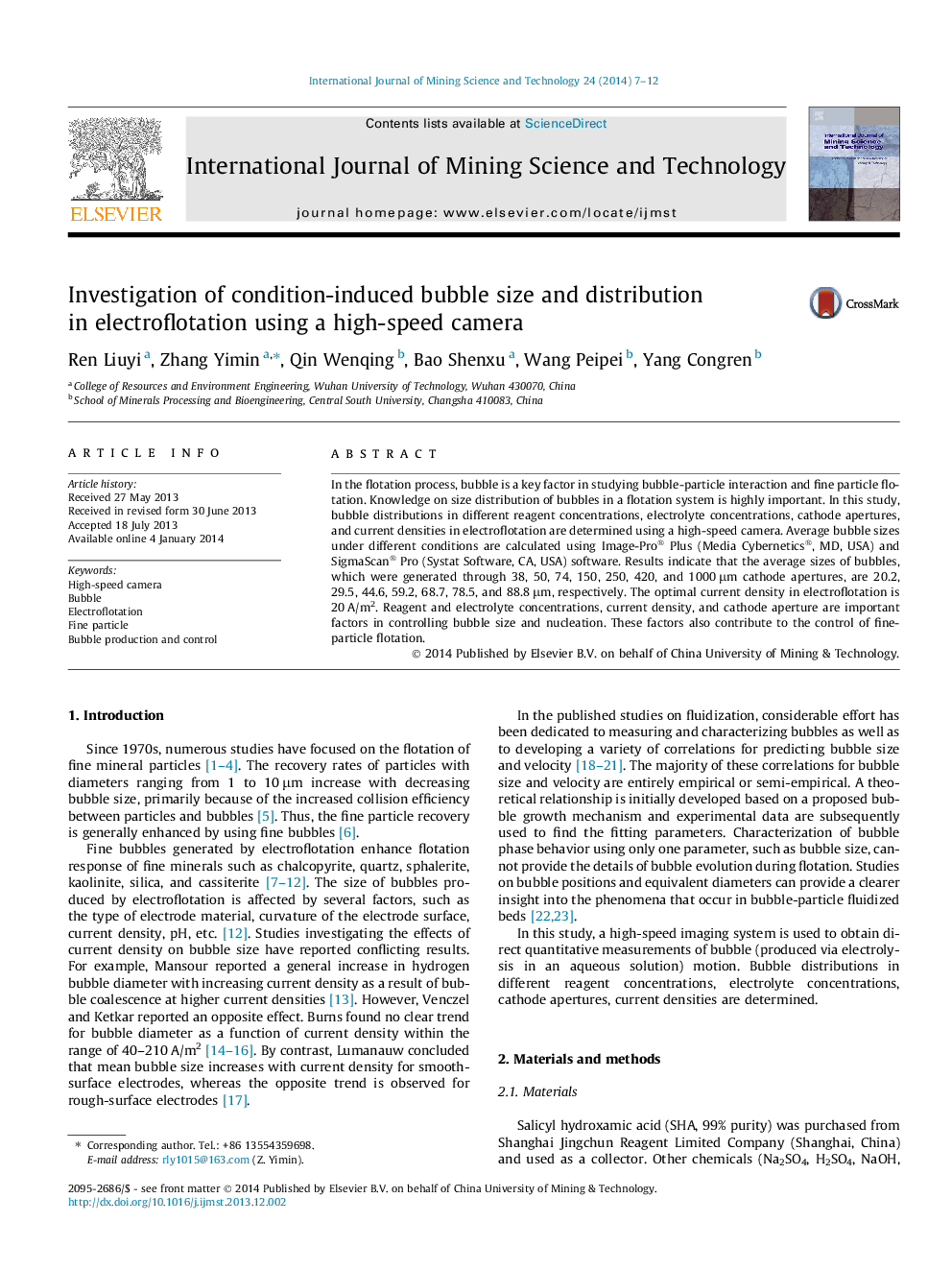| Article ID | Journal | Published Year | Pages | File Type |
|---|---|---|---|---|
| 276528 | International Journal of Mining Science and Technology | 2014 | 6 Pages |
In the flotation process, bubble is a key factor in studying bubble-particle interaction and fine particle flotation. Knowledge on size distribution of bubbles in a flotation system is highly important. In this study, bubble distributions in different reagent concentrations, electrolyte concentrations, cathode apertures, and current densities in electroflotation are determined using a high-speed camera. Average bubble sizes under different conditions are calculated using Image-Pro® Plus (Media Cybernetics®, MD, USA) and SigmaScan® Pro (Systat Software, CA, USA) software. Results indicate that the average sizes of bubbles, which were generated through 38, 50, 74, 150, 250, 420, and 1000 μm cathode apertures, are 20.2, 29.5, 44.6, 59.2, 68.7, 78.5, and 88.8 μm, respectively. The optimal current density in electroflotation is 20 A/m2. Reagent and electrolyte concentrations, current density, and cathode aperture are important factors in controlling bubble size and nucleation. These factors also contribute to the control of fine-particle flotation.
